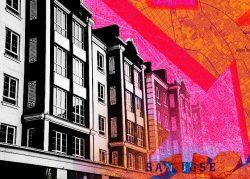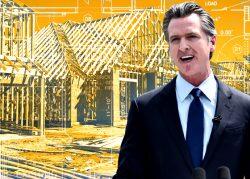The City of San Rafael must add 3,220 homes by 2031–a third of them affordable–to satisfy a state housing mandate.
Rezoning land for apartments will be necessary, according to the Marin County municipality.
A housing crunch has added a challenge to San Rafael’s efforts to update the state “housing element,” a policy document designed to remove regulatory barriers to creating new homes, the Marin Independent Journal reported.
The city must find funding for new affordable housing projects and preserve existing affordable housing, city officials say. The city also must reevaluate zoning ordinances and regulations to address existing segregation.
“Our community needs housing, and we need to find a way to address that,” said Ali Giudice, the city’s community development director, during a presentation on housing goals. “We’re going to do what we can to address the need for safe affordable housing within our community.”
The current housing element expires Jan. 31, 2023. Cities across the state are required to adopt an updated element every eight years. San Rafael’s due date is Jan. 15.
The state has asked for a 20 percent buffer on planning, which requires planning for about 4,000 units, in case some sites don’t pan out.
A key issue is affordability.
A household of four earning less than $91,350 in Marin is considered “very low income.” A household of four earning between $91,350 and $146,350 is considered low income. A quarter of San Rafael households – or half its renters – are considered very-low income earners.
“We have 4,000 households in San Rafael that are earning less than 30 percent of the county median income and are extremely low income,” said Barry Miller, a contract project manager who is leading the city’s housing element update effort.
He said the city inventoried more properties than needed for its existing housing element, which maps out a capacity for up to 2,415 residences. The existing housing element identified 45 sites; 37 are still available. He said sites must be chosen throughout the city and not clustered to ensure equity and diversity.
Ray Lorber, a resident and member of Catalysts for Local Control, said he was concerned about fire hazards, water demands and traffic. “San Rafael is changing,” he said. “Now it’s not the city we moved into. We’re very concerned about it.”
Mayor Kate Colin said San Rafael is changing. She said she recognizes it and she is proud of it. Councilwoman Maribeth Bushey added, “We don’t need to push back, we’re going to push forward.
“There were horses and buggies here at one time,” Bushey said. “If we didn’t change, we would be going backwards. San Rafael moves forward.”
[Marin Independent Journal] – Dana Bartholomew
Read more


